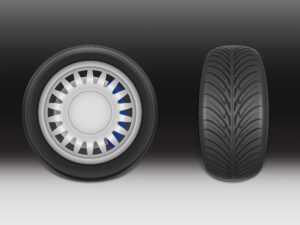How Car AC Works: Everything You Need to Know

There’s nothing quite like stepping into a car with a perfectly functioning car air conditioning system, especially on a sweltering summer day. But have you ever wondered how car AC works to cool down the cabin so efficiently? Understanding the car AC mechanism not only helps you appreciate its function but also makes it easier to identify potential issues before they turn into major problems.
In this comprehensive guide, we’ll explain the entire car cooling system, from how the refrigerant absorbs heat to how the cool air is distributed through your vehicle’s vents. Whether you’re troubleshooting a problem or simply curious, knowing how car AC works will help you stay informed and ensure your comfort on the road.
Now, let’s dive into the details of how car AC works and what components make this cooling system function so seamlessly.
What is a Car AC System?
A car air conditioning system is a complex network of parts designed to control the climate inside your vehicle. It cools, purifies, and dehumidifies the air, creating a comfortable environment no matter the outside temperature. By removing excess heat from inside the car and expelling it outside, the car AC mechanism creates the refreshing chill that makes driving pleasant during hot weather.
In addition to providing cool air, the car air conditioning system helps reduce humidity, which can make a significant difference in tropical or rainy climates. Understanding how car AC works can help you maintain the system better and identify when something is not functioning properly.
How Car AC Works: The Basics
At the core of how car AC works is the ability to manipulate refrigerant between gas and liquid states to transfer heat out of the car’s cabin. This process ensures that the hot air inside your vehicle is replaced with cool, dry air. Here’s a simplified breakdown of the car AC mechanism:
- The compressor pressurizes the refrigerant gas, turning it into a high-pressure, high-temperature vapor.
- This hot gas passes through the condenser, where it is cooled and transformed into a liquid.
- The liquid refrigerant then flows through an expansion valve, which reduces its pressure and temperature.
- As the refrigerant moves through the evaporator, it absorbs heat from the car’s interior, cooling the air that is blown into the cabin through the vents.
- The now-warm refrigerant, which has turned back into a gas, returns to the compressor, where the cycle starts over again.
This continuous cycle is what keeps the cabin cool and comfortable, and understanding how car AC works can help you detect early signs of trouble, like warm air coming from the vents or strange noises from the compressor.
Key Components of a Car AC System
The efficiency of your car cooling system depends on several critical components working together. Here’s a breakdown of the main parts involved in how car AC works:
- Compressor: Often called the heart of the car air conditioning system, the compressor pressurizes the refrigerant and circulates it throughout the system. Without a functioning compressor, the system cannot cool the air.
- Condenser: Located near the front of the car, the condenser dissipates heat absorbed by the refrigerant. It transforms the refrigerant from a high-pressure gas into a cooler liquid, which is crucial in how car AC works to cool down your vehicle.
- Receiver-Dryer: This component removes moisture from the refrigerant to prevent internal corrosion and freezing. Proper dehydration of the refrigerant is essential to keep the system running smoothly.
- Expansion Valve: The expansion valve reduces the pressure of the refrigerant, allowing it to enter the evaporator as a low-temperature liquid. This process is crucial to how car AC works, as it ensures the refrigerant is cool enough to absorb heat from the car.
- Evaporator: Located inside the dashboard, the evaporator absorbs heat from the air inside the cabin, cooling it down before blowing it back into the vehicle. The evaporator is one of the most important components in how car AC works to maintain a comfortable temperature inside the car.
Common Types of Car AC Systems
Different vehicles may use variations of car air conditioning systems, but the principles of how car AC works remain the same. Here are the two most common types of systems:
1. Orifice Tube & Accumulator System
- This system uses an orifice tube to control the flow of refrigerant and an accumulator to store excess refrigerant. The orifice tube allows for a fixed reduction in refrigerant pressure, and the accumulator ensures any excess refrigerant is safely stored and vaporized before it returns to the compressor. This is a common system in many vehicles today.
2. Expansion Valve & Receiver-Drier System
- In this system, the expansion valve is used to control the refrigerant flow based on the temperature of the evaporator. The receiver-drier removes moisture and stores refrigerant before it enters the evaporator. This system is often found in high-performance or luxury vehicles, where maintaining precise cooling control is critical.
Common Car AC Problems and Solutions
Understanding how car AC works also means knowing what could go wrong. The car air conditioning system can encounter a variety of problems that reduce its efficiency or stop it from working altogether. Here are the most common issues and how to resolve them:
- Low Refrigerant Levels: A frequent cause of poor cooling. When the refrigerant is low, the AC cannot cool the air effectively. Recharging the system with refrigerant can restore its performance.
- Leaks in the System: Leaks in the refrigerant lines, hoses, or compressor can cause the system to lose refrigerant and stop functioning. A thorough inspection is necessary to identify and fix the leaks before recharging the system.
- Blocked Condenser: Debris, dirt, or grime can block the condenser, reducing airflow and preventing the refrigerant from cooling properly. Cleaning or replacing the condenser can resolve this issue.
- Faulty Compressors: If the compressor is not working correctly, the entire car AC mechanism fails. Compressors often fail due to wear and tear, and they may need to be replaced to restore proper cooling.
Why Regular AC Maintenance is Important
Regular maintenance is crucial for the long-term health of your car cooling system. By keeping the car air conditioning system well-maintained, you ensure that it runs efficiently and avoids costly repairs. Here are some reasons to service your AC regularly:
- Efficient Cooling: Routine maintenance helps maintain optimal cooling, ensuring that your car AC mechanism is functioning properly, especially during the hottest months.
- Extended Lifespan: Servicing your car air conditioning system helps prevent wear and tear on components like the compressor and condenser, extending the overall lifespan of the system.
- Prevent Costly Repairs: Early detection of issues, like leaks or blockages, can prevent small problems from becoming expensive repairs later on.
How to Troubleshoot Your Car’s AC
Troubleshooting your car AC mechanism can save you time and money. Here are a few steps you can take before calling a professional:
- Check Refrigerant Levels: If your AC isn’t cooling effectively, low refrigerant could be the culprit. You can check the refrigerant pressure using a gauge.
- Inspect the Compressor: Listen for any unusual noises or vibrations coming from the compressor. This can indicate that it’s struggling to compress the refrigerant.
- Look for Leaks: Refrigerant leaks are a common issue. Inspect the hoses and connections for any visible signs of oil or refrigerant stains.
- Clean or Replace Filters: Dirty air filters can block airflow and reduce cooling efficiency. Replacing the air filter is a simple task that can significantly improve your AC’s performance.
How Often Should You Service Your Car AC?
The frequency of AC maintenance depends on how often you use your vehicle and the conditions in which you drive. However, it’s generally recommended to service your car air conditioning system every 6 months. This ensures the system is functioning properly and addresses any issues before they escalate. Regular servicing is especially important before summer when the car cooling system will be in heavy use.
KwikFix Auto: Your Trusted Partner for Car AC Maintenance
Maintaining your car’s AC is essential for comfort and efficiency. At KwikFix Auto, we offer door-step car AC service, along with free pick-up and drop-off options. Our expert technicians use quality products and follow a 6-month service recommendation to ensure your car air conditioning system runs smoothly. Schedule your next service by contacting us at +91 9950 345 345 or visit us here.
Frequently Asked Questions
Q1. How does car AC work?
A1. How car AC works involves compressing refrigerant gas, cooling it down, and circulating it through the evaporator to remove heat from the car’s cabin.
Q2. How often should I service my car AC?
A2. Service your car air conditioning system every 6 months to ensure peak performance and avoid breakdowns.
Q3. Why is my car AC blowing warm air?
A3. Warm air could indicate low refrigerant levels, a faulty compressor, or a clogged condenser. A professional inspection can pinpoint the exact issue.
Q4. Does using car AC consume more fuel?
A4. Yes, using the car AC mechanism does consume fuel since the compressor is powered by the engine. However, modern systems are designed to be fuel-efficient.
Q5. How can I tell if my AC compressor is failing?
A5. If you notice loud noises, insufficient cooling, or no airflow, your compressor may be failing and may need to be replaced.
Q6. How does refrigerant cool the air in my car?
A6. Refrigerant absorbs heat inside the car and is then compressed and cooled before being recirculated, which is the key function of how car AC works.
Q7. What is the most common cause of car AC failure?
A7. Leaks in the refrigerant lines are the most common cause of AC failure. Addressing leaks early can prevent the system from breaking down completely.
Q8. Can I clean my car AC system myself?
A8. While cleaning air filters can be done at home, it’s best to have a professional service the car air conditioning system to ensure all components are working properly.
Related Articles
AC Not Working in Car | Car AC Coil Replacement Cost | How to Use Car AC | Car AC Problems | Car AC Cleaner Foam | Car AC Evaporator Cleaner | AC Switch for Car | Cost of Replacement Electric Car Batteries | Is Apollo Tyre Good | Apollo Tyres vs MRF Tyres





